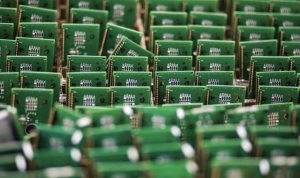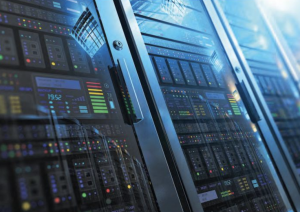
Adding intelligence at the edge
By Dave Mannila, Senior Product Manager, Sciemetric Instruments
Automation / Robotics Electronics IoT automation automation data data industrial industrial Industry 4.0 Industry 4.0 IoT IoTWhat does it take for the manufacturing and industrial domains?
For Industrial Internet of Things/Industry 4.0 applications, edge computing can yield a number of tangible benefits, provided you have deployed the right device for the job. 
From manufacturing to industrial automation, machines and processes are being connected to share data – data that can be used to monitor a process, perform real-time pass/fail control, and analyzed to determine how a process can be optimized and quality improved.
The seamless flow of data, from the process or machine and back to it, is the lifeblood of IIoT and I4.0. But with a centralized network architecture – whether it is cloud-based or on-premise – this flow can too easily become a flood that leads to latency and bandwidth issues.
An edge network can avoid these chokepoints because it uses a distributed architecture in which individual devices with varying degrees of data collection and processing capability (let’s call them modules) are located much closer to the network’s data sources. This can reduce the load on the network and enable more rapid decision-making.
There are many vendors today that specialize in edge solutions for manufacturing and industrial process control. These include configurable hardware and software components that may or may not provide the range of capabilities and the flexibility that you require. But whether it is your intent to procure an off-the-shelf solution or custom build your own, the same questions must be asked to ensure you end up with the right tool for the job.
1) Size and enclosure matters
In this case, bigger is not better. The smaller the module, the more versatile it can be, to fit where you need it to. It should be a self-contained unit with its own sealed enclosure. That way, in can be externally mounted and easily accessed, in close proximity to the data being collected.
2) Consider the operating environment
The environmental conditions in which the module will operate must also be addressed. Temperature and humidity extremes or risk of physical damage have to be considered with the choice of material and design of the enclosure. Hot environmental conditions, for example, may create overheating issues for the onboard processor and components.
3) And speaking of hardware
What sort of information will be collected and how? This will determine the minimum computing power you will need in the module. With today’s technology, more computing horsepower won’t impact the module size or environmental requirements. It does, however, make a huge difference in cost.
If the edge module is only expected to take static measurements at intervals measured in seconds or minutes, a low cost, off-the-shelf module may be sufficient. On the other hand, if the module will be sampling continuously at a very high rate – at thousands or even millions of times a second – this can drive the cost of the system much higher.
Right-size for today’s needs, but also appreciate that data and processing volumes on the edge will inevitably increase. The challenge is to leave yourself some wiggle room that will prevent the module from becoming obsolete too fast, without overpaying for capacity that you won’t need.
4) What type of data is being received?
This is an analog versus digital question. Whether it is an analog signal (measured in voltage, current or resistance) or digital (a stream of discrete ones and zeros) it will dictate the type of data interface and signal conditioning that is required. The module must be designed to handle the maximum possible magnitude of the signal, and have sufficient resolution to detect the smallest desired variation in the signal being measured.
Consider too if the data is being received by other methods – RS-232 for example, or by a fieldbus such as Ethernet IP.

5) What do you plan to do with the data?
Further to the previous point, what do you intend to do with that data? Is the requirement simply to collect and pass it along (whether to an on-premise database or a cloud server)? Is there a requirement to have greater intelligence at the edge, with autonomous decision-making taking place within the module based on the data received?
Not only does this dictate the horsepower (and resulting cost) required of the hardware, it also influences the choice of software with which to manage the module. As with hardware, there are plenty of off-the-shelf options for software these days that allow the module to be configured and managed with user-friendly interfaces. There may still, however, be those situations where custom software will have to be developed.
6) What do you want the device to do?
If the module is performing some level of signal processing and analysis on the data it receives, where will that output go? Will it simply be passed along for storage and future analytics, or will it serve as an instruction that is sent back to the data’s point of origin – the specific machine or process?
In the latter scenario, the edge module serves as a feedback control device – the control point in a closed loop. This may be in the form of a simple pass/fail output, or could be an analog or digital control signal to correct or adjust the setpoint of the process. If this is the role that the edge module must play, this will again impact the choice of hardware and software.
7) How will the module be accessed?
What kind of accessibility do you want for device configuration and management? You may want an entirely wireless connection, or the ability for remote management from anywhere in the world. Or it may be enough to just be able to plug in a USB cable for access.
In closing
Whether it is to qualify an off-the-shelf solution or to develop the design parameters for your own build, the checklist is relatively long to ensure you have the right combination of hardware and software in each edge module to serve your needs. Ideally, each module should be a self-contained system that fits in the palm of your hand. A decade ago, that idea would have been ludicrous. Today, it’s a necessary investment to remain competitive.
——————————————
As a senior Product Manager at Sciemetric Instruments, Dave Mannila has broad responsibility for new product concept, definition and development, as well as maintaining Sciemetric’s overall product roadmap.
